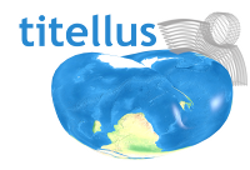Summary
Based on this previous work, the challenge is to further develop the concept of mapping people’s happiness based on their location (and proximity to green and blue spaces). This should take advantage of improvements in the technology in and behind ‘smart phones’ and social media as well as their increased uptake across all demographics in the UK.
Background
‘Ecosystem services’ are defined as falling into four categories: supporting, regulating, provisioning and cultural. ‘Human well-being’ is viewed as a key benefit of ecosystem services, in terms of economic, health and shared (social) value. In particular, ‘green’ and ‘blue’ spaces are thought to improve human well-being in terms of both physical and mental health.
“Cultural services are derived from environmental settings (places where humans interact with each other and with nature) that give rise to cultural goods and benefits. In addition to their natural features, such settings are imbued with the outcomes of interactions between societies, cultures, technologies and ecosystems over millennia. They comprise an enormous range of so-called ‘green’ and ‘blue’ spaces, such as gardens, parks, rivers and lakes, the seashore and the wider countryside, including agricultural landscapes and wilderness areas. Such places provide opportunities for outdoor learning and many kinds of recreation; exposure to them can have benefits including aesthetic satisfaction and improvements in health and fitness and an enhanced sense of spiritual well-being.” (UK NEA[1], page 18).
Research undertaken by the UK NEA team to “reveal detailed patterns of the relationships between subjective well-being and the natural world”. They generated “instantaneous measures of happiness (mappiness) collected repeatedly from more than 18,000 mobile phone users were analysed in relation to respondents’ location and activity. The mappiness results support and add extra information to a separate web survey regarding the link between outdoor pursuits (such as use of domestic gardens and parks) and well-being, and uncover a larger range of potentially happiness-enhancing activities” (UK NEA, page 32).
The challenge
Whilst some work has already been done on ‘mappiness’ (see http://www.mappiness.org.uk/) it is relatively limited. mappiness.org. uk beep people once a day to “ask how you’re feeling, and a few basic things to control for: who you’re with, where you are, what you’re doing (if you’re outdoors, you can also take a photo)”. We think that the concept has greater potential and would also benefit from linking with other online sources of information such as twitter feeds and other social media.
The challenge is therefore to further develop the concept of mapping people’s happiness based on their location (and proximity to green and blue spaces). This should take advantage of improvements in the technology in and behind ‘smart phones’ and social media as well as their increased uptake across all demographics in the UK.
As a minimum, the solution should meet the following requirements:
- Developed for mobile technology (e.g. smartphones, tablets)
- Utilise social media data
- Utilise ‘my location’ or equivalent functionality (e.g. option to enter grid reference/ post code etc. if ‘my location’ not enabled)
- Enable users to enter their level of happiness and potentially a number of other pieces of non-personal data e.g. activity (e.g. windsurfing, hiking etc.)
- Aim to generate a set of data that can be used to map happiness in different locations and at different times that itself can be merged with other data to determine related impacts (e.g. effect of weather on happiness and ability to benefit from cultural services)
Sub-challenge – focusing on the location rather than the individual, to develop a mobile based solution to enable people to ‘rate a place’ in terms of how it makes them feel and why (e.g. green/ blue space, activities available, memories etc.). This could similarly provide evidence of the cultural/ aesthetic value of our environment. Opportunities should be taken to overlay additional data to improve understanding of the recorded level of happiness, such as the weather conditions at that time.
Data Resources(s)
No specific data sources are provided in relation to this challenge but teams may identify data sources that could be of value and it may be possible to provide either full sets or samples for the event. The solution could utilise data from : British Geological Survey, Centre for Ecology and Hydrology, Department for the Environment, Farming and Rural Affairs (Defra), Environment Agency, Met Office, Natural Environment Research Council and Ordnance Survey.




































